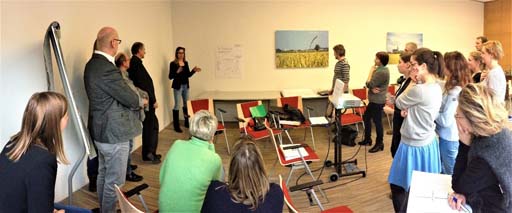Summary of Session 1
This session has introduced the key features of Living Labs and how they can play a role in devising innovative agricultural advisory services. They are user-centred, open innovation ecosystems based on the co-creation of innovative solutions.
Both active user involvement and multi-stakeholder participation combined with the use of a multi-method approach enables the integration of research and innovation processes in real-life communities and settings. They change the dynamics about how knowledge is developed and shared amongst those involved in the Living Lab.

References for Session 1
Leminen, S., Westerlund, M., and Nyström, A.G. (2012) ‘Living Labs as open-innovation networks’, Technology Innovation Management Review, 2(9): 6-11.
Schuurman, D., Mahr, D., De Marez L., and Ballon, P. (2013) ‘A fourfold typology of living labs: An empirical investigation amongst the ENoLL community’, 2013 International Conference on Engineering, Technology and Innovation (ICE) & IEEE International Technology Management Conference, The Hague, 2013, pp. 1-11.
Zavratnik, V., Superina, A., and Stojmenova Duh, E. (2019) ‘Living Labs for Rural Areas: Contextualization of Living Lab Frameworks, Concepts and Practices’, Sustainability, 11(14), p.3797.
Go to Session 2: The nature of innovative agricultural advisory services [Tip: hold Ctrl and click a link to open it in a new tab. (Hide tip)]
The nature of innovations, knowledge exchange and practices
